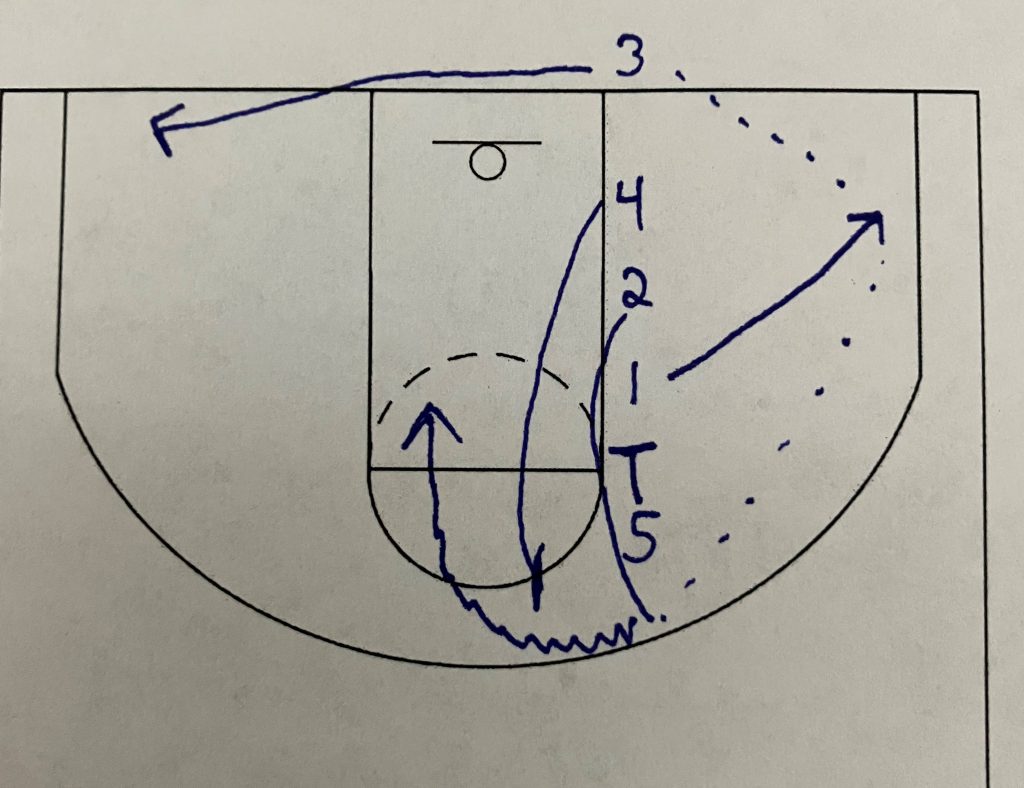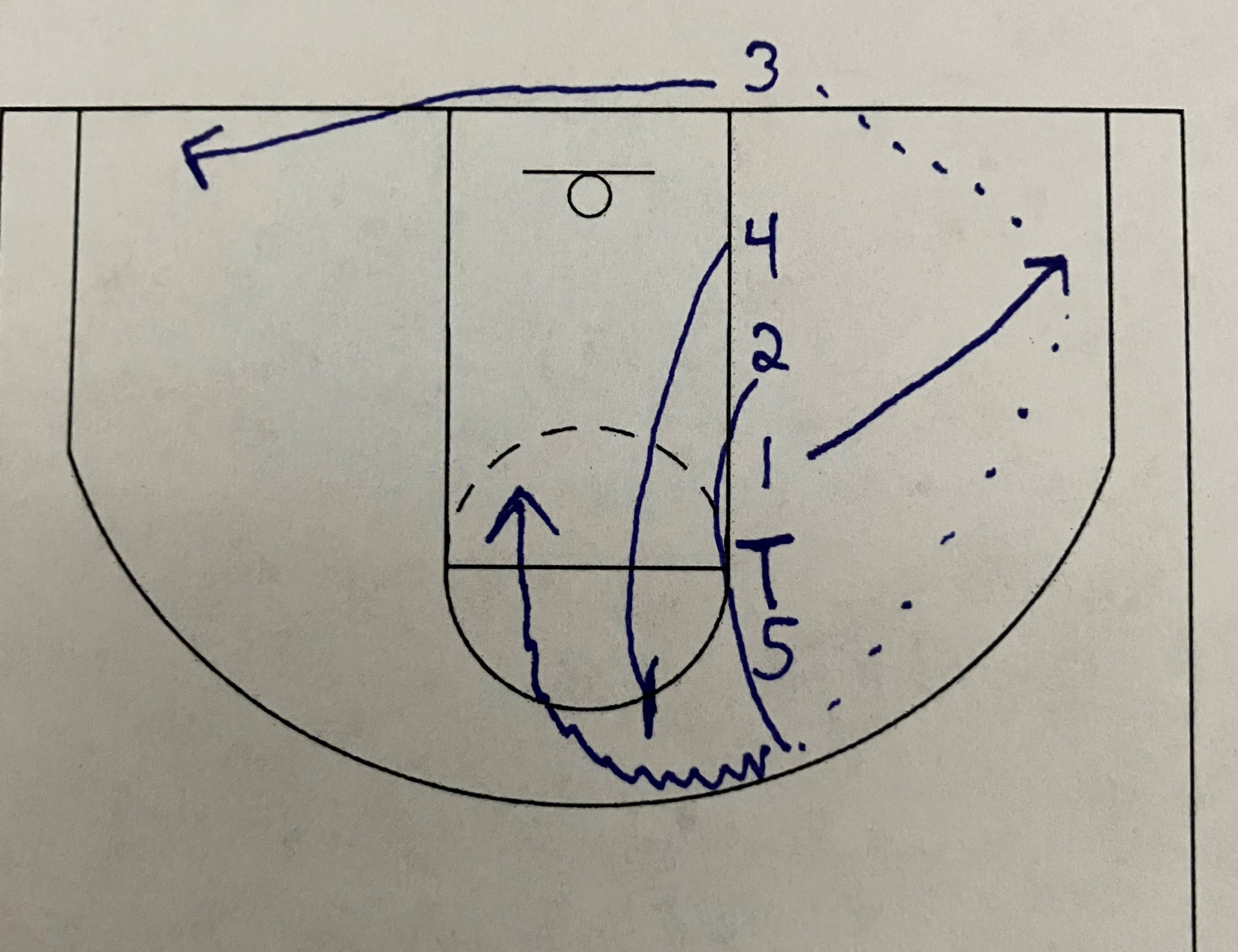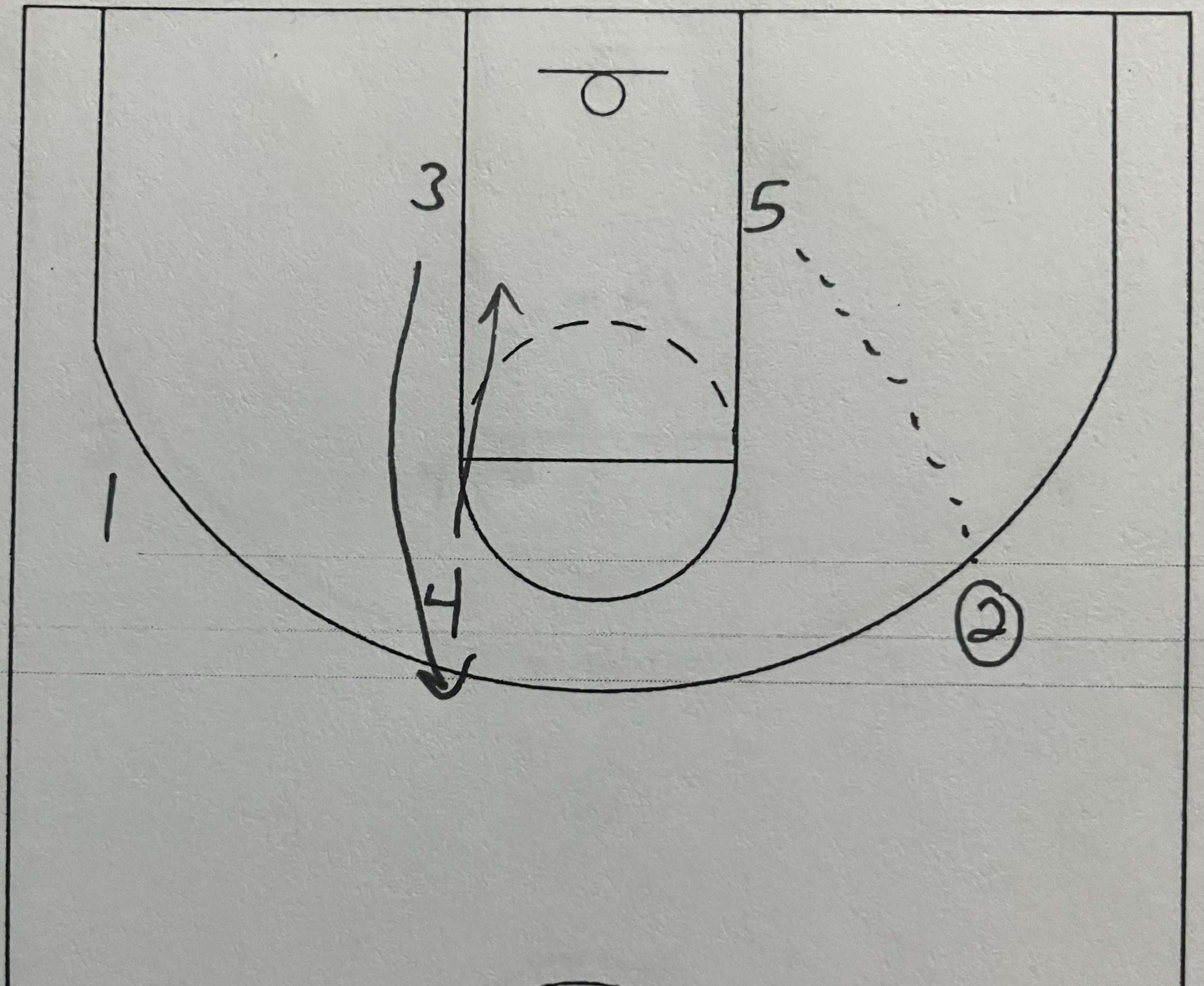One effective way to score with BLOB plays is to do something completely unexpected from the standard play. A stack play usually has a post player in the back of the stack. The front 3 players cut out of the stack or set a screen for the post player. The post player comes down the lane to catch the in-bounds pass and get an easy layup around the basket.
Every coach and every player has ran this standard stack play or something very close to it. Because of this, every defense is planning to stop the post player coming down the lane when a stack formation is used. The offense can use the defensive anticipation against them. Instead of running the post player down the lane, the offense can do something completely different to attack the offense.

There are two actions on this BLOB play. The first action is a possible 3-point shot. And the second action is a ball screen. This gives the play multiple ways to score and makes the defense have to stop multiple actions. If the defense overplays or underplays either action, then the offense will have an opening to get a good shot.
The players start in a stack formation with the big(4) in front and the guard(2) behind them. The point(1) is next with the center(5) in the back. On the start, the point(1) is running out to the ballside corner to clear out of the way. The center(5) is stepping down to set a screen for the guard(2). The center(5) needs to get as far down the lane as possible. The farther the center(5) can move down the lane, the more room the guard(2) has on the catch.
The guard(2) is turning and going up the lane. The forward(3) is going to in-bound the ball over the top straight to the guard(2). If the defense does not follow the guard(2) up the lane, then this is the first option for the offense. If no defender closes out to the guard(2) on the catch, then it is an automatic 3-point shot.
This shot is going to be there at times especially if the defense is overly concerned with the center(5) coming down the lane. The guard’s(2) defender could wait around the block or mid-post to help prevent the straight in-bounds pass to the center(5). When this happens, the guard(2) will be open on the catch and have a good open 3-point shot.
If the 3-point shot is not available, then the BLOB play moves into the 2nd action. The big(4) is turning and following the guard(2) up the lane. The big(4) is coming up and setting a ball screen for the guard(2).
The forward(3) can clear to either corner. The forward(3) staying ballside will clear the entire backside of the court for the guard(2) to have as much room as possible to create and score. The forward(3) going to the backside corner like I have them doing in the diagram gives the guard(2) a potential kick out 3-pointer.
This is a great play for a good driving guard(2). The guard(2) will have a lot of room off of the ball screen to create. There are options multiple options for scoring. They are…
- The guard(2) comes off the ball screen and gets a layup or pull up jumper.
- The guard(2) has the dump off pass to the center(5).
- The guard(2) has kick out options to the forward(3) or point(1) in the corners.
- The guard(2) has a pick and pop option with the big(4).
All of these options gives the offense options no matter how the defense guards the play. Any breakdown in the defense should lead to an open shot for the offense with the offensive guard(2) having the time and space to create. This is a good play because it goes against the traditional stack play. Any slow movement by the defense or rotation should leave somebody on offense open.
I like this play as a counter to the traditional stack play. If the defense is playing hard to stop the center(5) coming down the lane, then this BLOB play can be ran to attack the defense in a different way. If you are running the traditional stack play, then add this to your playbook to give you a counter to a defense that plugs up the block area in front of the inbounds pass.




